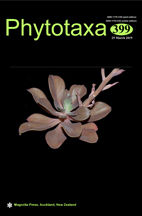Abstract
The traditional classification of the Myxomycetes (Myxogastrea) into five orders (Echinosteliales, Liceales, Trichiales, Stemonitidales and Physarales), used in all monographs published since 1945, does not properly reflect evolutionary relationships within the group. Reviewing all published phylogenies for myxomycete subgroups together with a 18S rDNA phylogeny of the entire group serving as an illustration, we suggest a revised hierarchical classification, in which taxa of higher ranks are formally named according to the International Code of Nomenclature for algae, fungi and plants. In addition, informal zoological names are provided. The exosporous genus Ceratiomyxa, together with some protosteloid amoebae, constitute the class Ceratiomyxomycetes. The class Myxomycetes is divided into a bright- and a dark-spored clade, now formally named as subclasses Lucisporomycetidae and Columellomycetidae, respectively. For bright-spored myxomycetes, four orders are proposed: Cribrariales (considered as a basal group), Reticulariales, a narrowly circumscribed Liceales and Trichiales. The dark-spored myxomycetes include five orders: Echinosteliales (considered as a basal group), Clastodermatales, Meridermatales, a more narrowly circumscribed Stemonitidales and Physarales (including as well most of the traditional Stemonitidales with durable peridia). Molecular data provide evidence that conspicuous morphological characters such as solitary versus compound fructifications or presence versus absence of a stalk are overestimated. Details of the capillitium and peridium, and especially how these structures are connected to each other, seem to reflect evolutionary relationships much better than many characters which have been used in the past.

